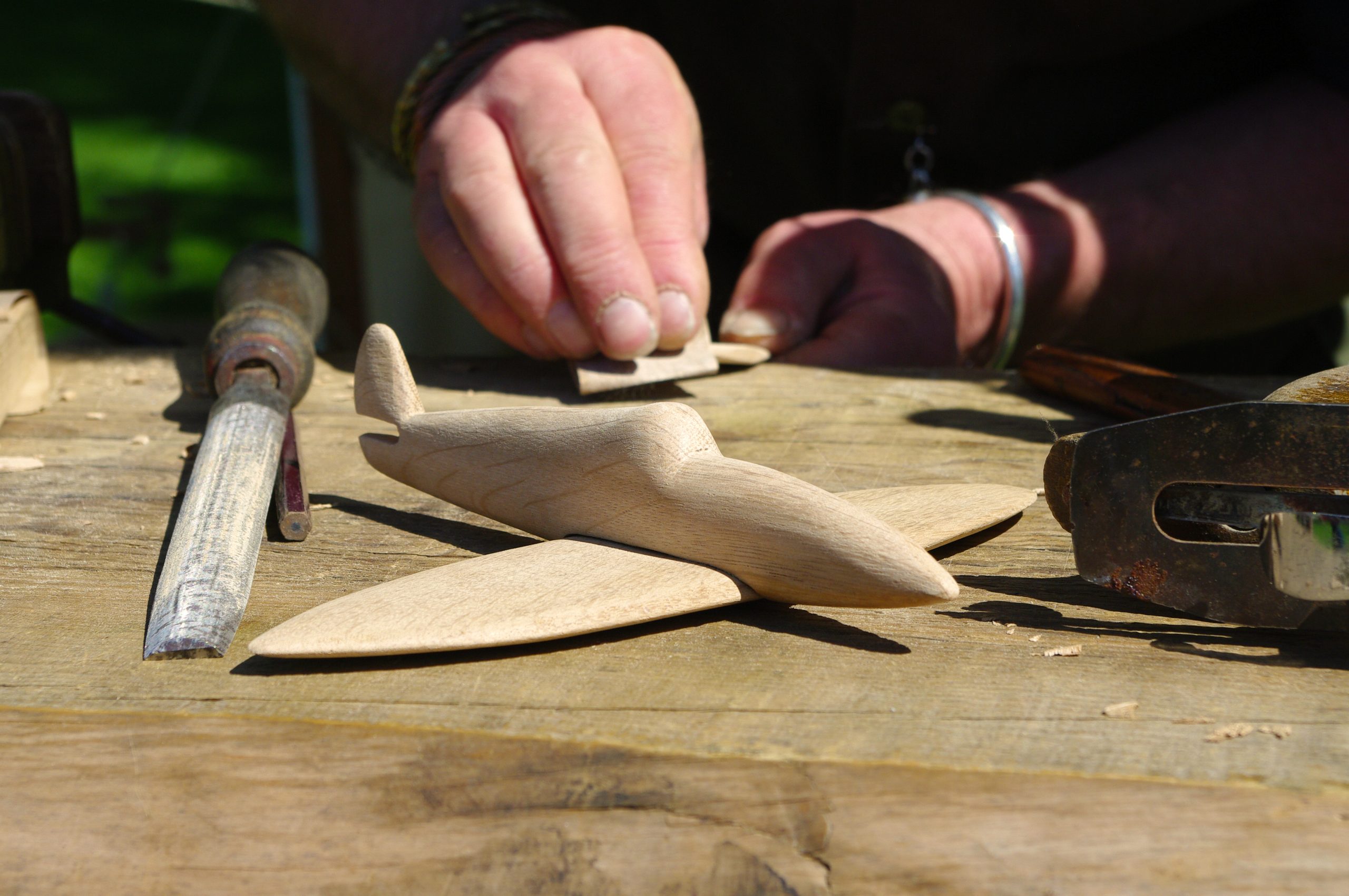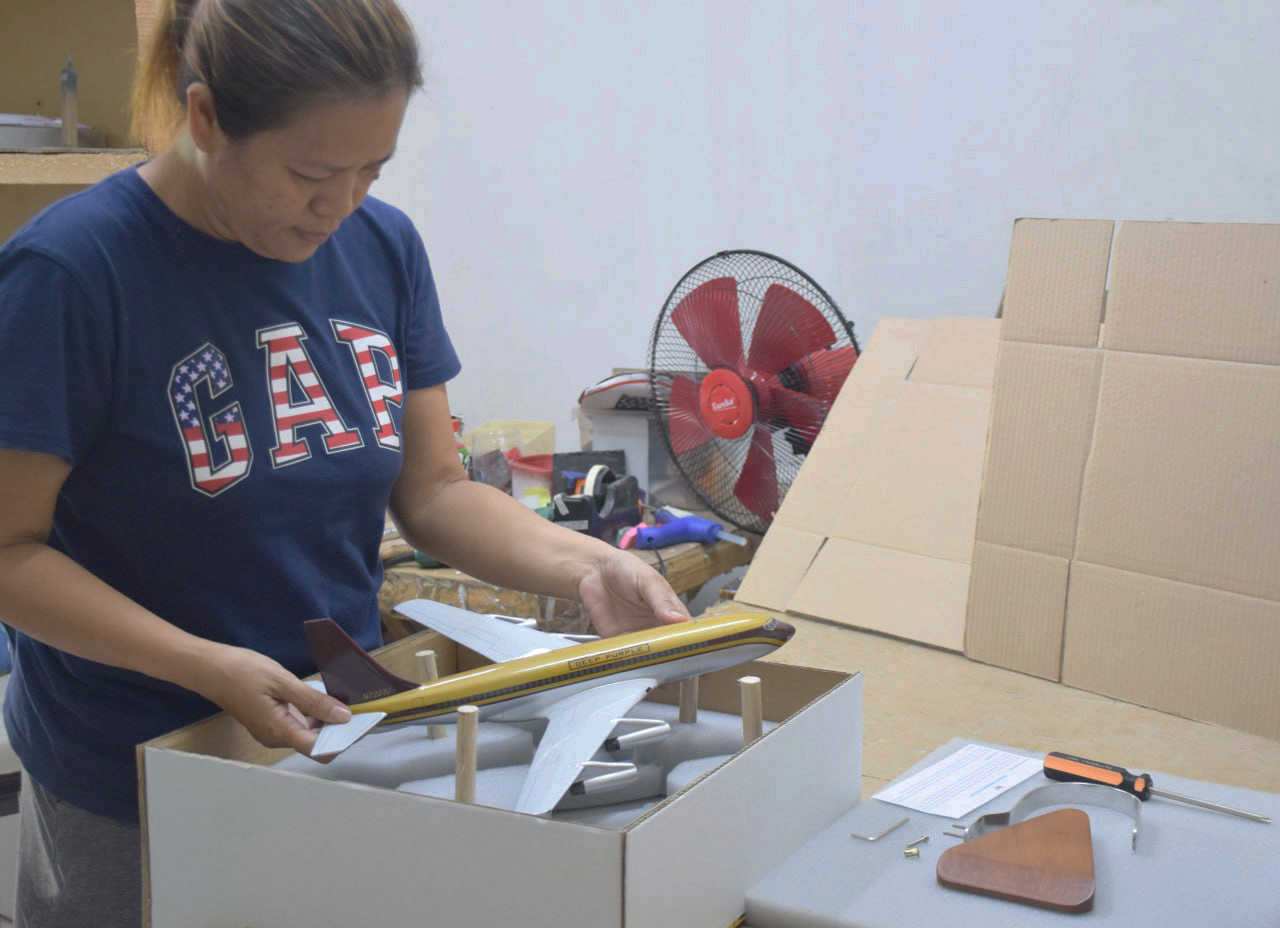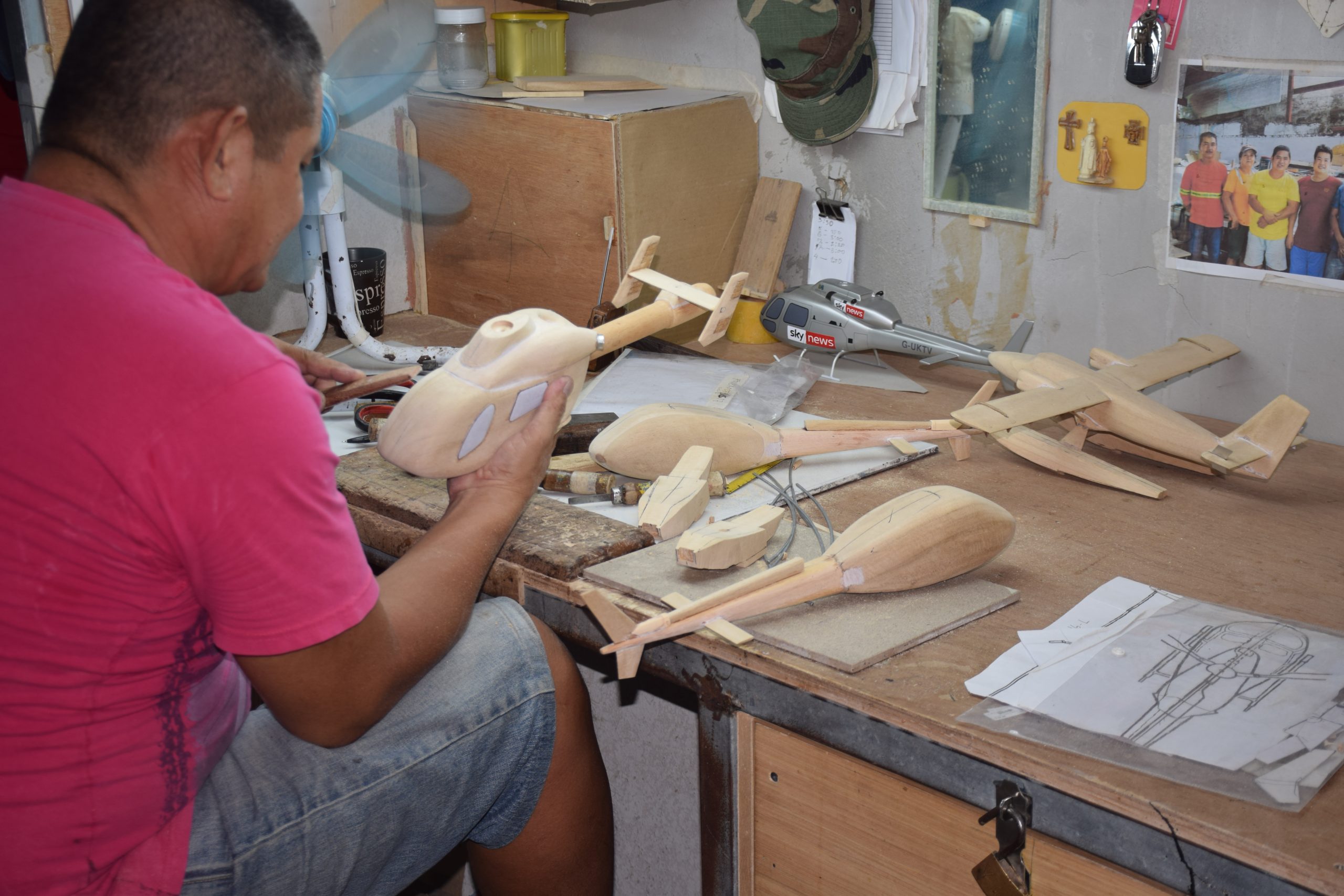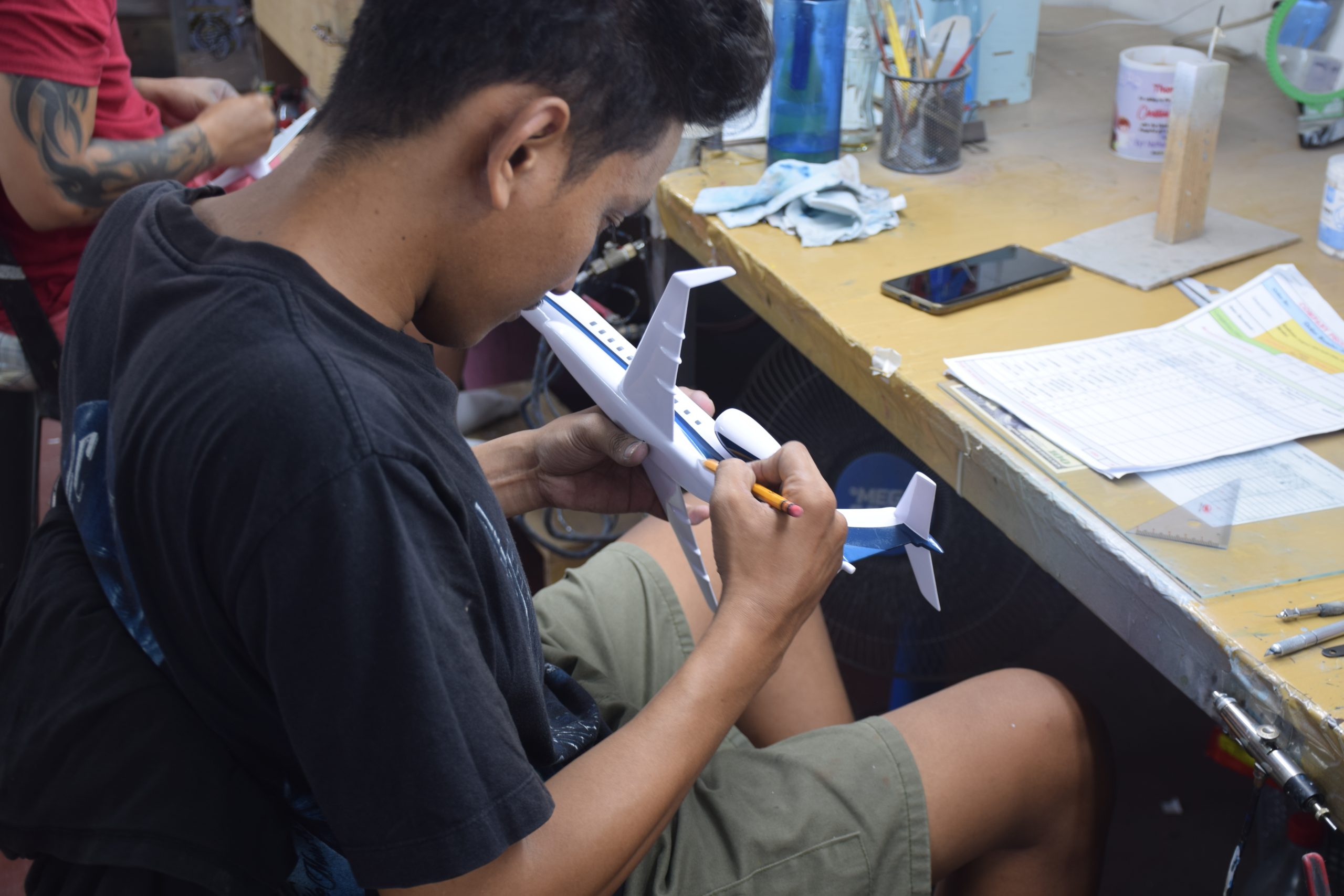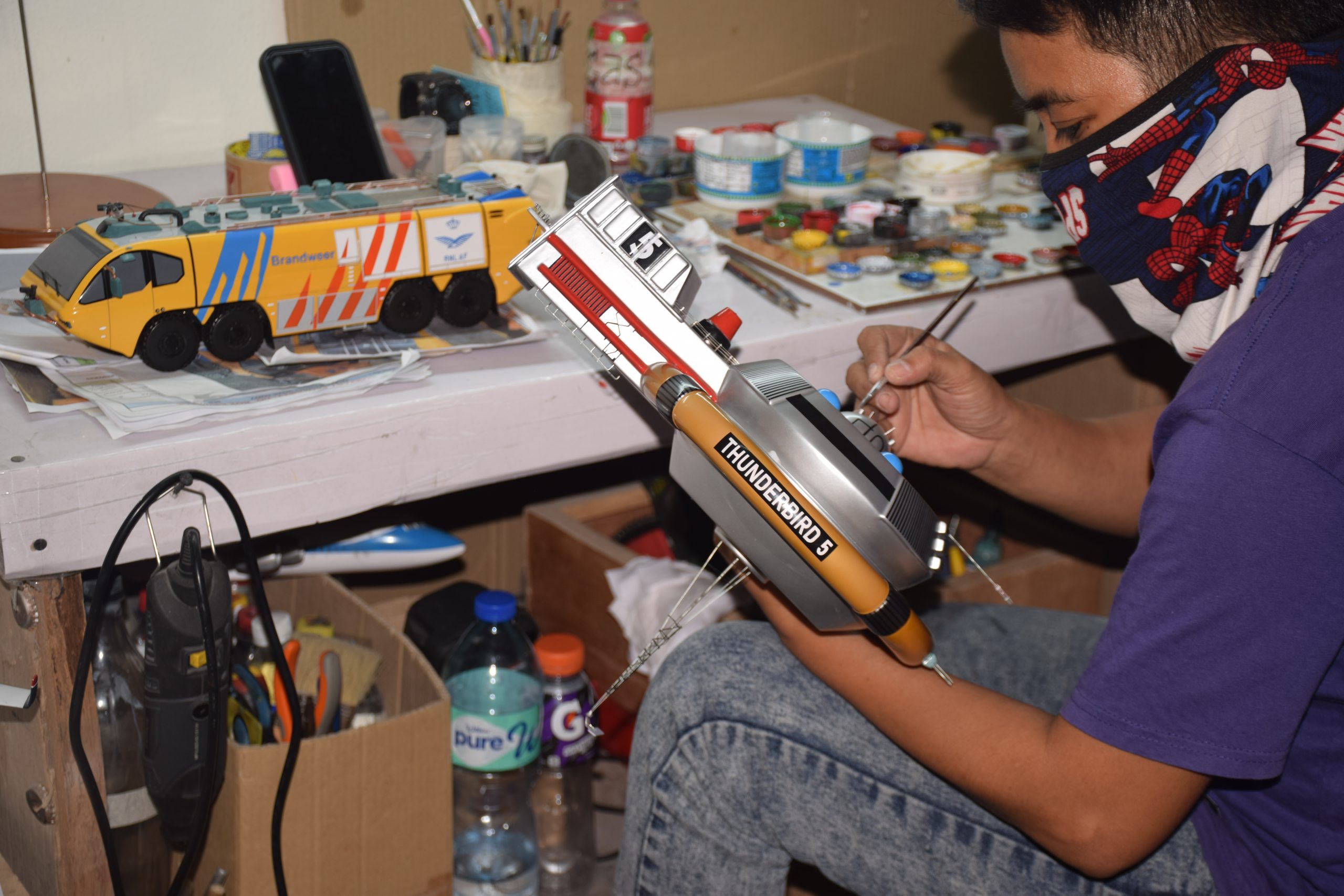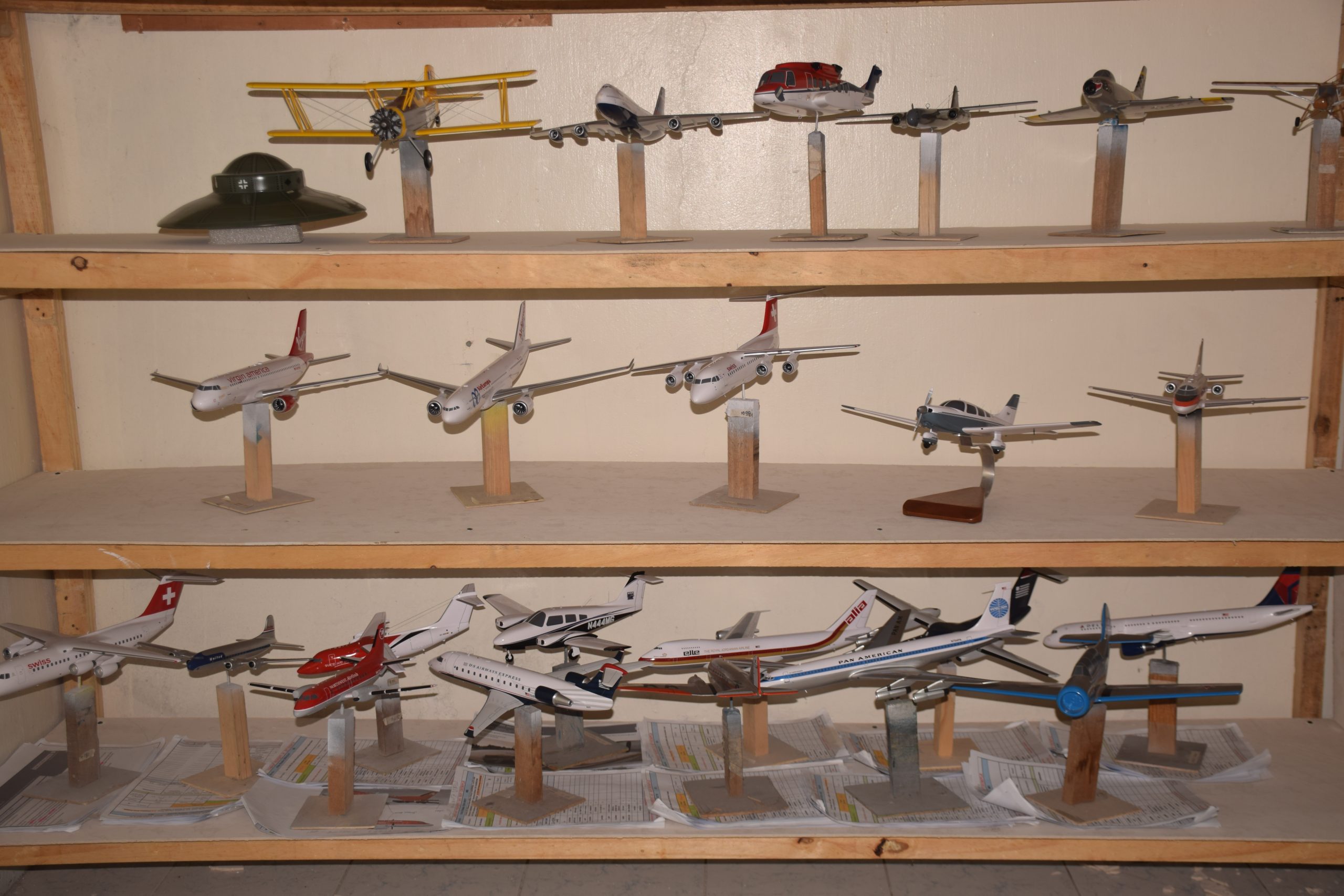
"You never really own a PlaneArts model - you merely look after it for the next generation"
Dimensions of the model are:
LENGTH: 17.00 INCHES (43.20 CM), WINGSPAN: 15.40 INCHES (39.10 CM), SCALE: 1:63
This model replica is painstakingly hand carved and then hand painted out of solid kiln dried mahogany wood (from renewable sources) by our highly experienced and talented craftsmen at our Filipino owned factory near the original Clark Air Base in Pampanga and takes about 8-10 weeks to manufacture.
It is our aim to continue to be a "sustainable" manufacturer avoiding the use of man-made materials wherever possible such as plastics, resins or metal in an attempt to reduce our Carbon Footprint and to protect our environment for generations to come. Our models are "works of art" and not to be confused with mass made plastic kits or diecast look–alike where almost all of these are Chinese manufactured. We are proud Filipino's exporting to all parts of the globe and creating employment opportunities in an impoverished part of our country.
Production in our factory is supervised by our own resident British Pilot who ensures that exact blueprints are used for these meticulously detailed scale models - custom manufactured and precisely engineered to your exact specifications and that will be cherished by all. To watch a video of the PlaneArts model making production process please click on the image below to start the video which will open in a separate page in your browser (the tab on in your browser for this page will still stay open so you can go back to the eBay listing)
The fully assembled model comes with a stained solid mahogany (or mahogany with steel arm) stand and is ready to display on your desk, bookcase or wherever you desire. The photographs you see have not been manipulated or digitally edited - they are exactly as the model looks in real life, but unfortunately even digital photography cannot do full justice to the look and feel of the model once you receive it!
PlaneArts have been producing models for over 20 years which are honed to perfection by the dexterity of our Skilled Master Craftsmen and carefully checked at all stages of manufacture by our dedicated Quality Assurance Team. We promote internationally on eBay to ensure our products get the best exposure worldwide. Due to a high level of demand and the huge diversity of aircraft types and liveries most models are made to order and take about 8-10 weeks to produce (excluding National and Public Holidays). You will also notice that we offer models often way below the price of other companies advertising on the eBay. We are able do this because of the direct manufacturing and selling basis of our business - models direct from the factory and not from an intermediary or trading / marketing company. All models are shipped internationally through FedEx, UPS or DHL Express Courier (Door to Door worldwide within about 3 business days). Fully traceable and insured against damage or loss).
Apart from those models you see in our eBay store - using your photos or images, we will make you a personalized replica model of your aircraft with your own individual paint scheme, logos, registration number, antennas and all the details that make your airplane special. You can even upgrade and personalize your model with a fully customized transparent interior to match your seats, colors, instrument panel and all other important interior details. Alternatively, we can copy any current or historic commercial or military airplane or helicopter that has ever flown just by giving us images or photos. Each meticulously detailed scale model is custom manufactured and precisely engineered to your exact specifications. We will build you a model that will not only meet your expectations but will go far beyond and with detail that will amaze you!
If you do not see the model you require in our eBay Store please message us on eBay with a description and images of what you require including the size or scale of the desired model and we will then do a dedicated listing for you on eBay. Our Customer Service Team will then help you with questions you may have and upon request update you on the status of your order. Our Production Team will work with you personally during construction until your model is ready to taxi on its journey to your own door in its foam fitted heavy duty export packaging. Before dispatch we will send you photographs from all different angles to review and approve prior to the model leaving. This is done to make sure that neither we, nor you, missed any important details.
To watch a video of the professional protective packing of PlaneArts models destined for all parts of the globe, please also click on the image below to start the video which will open in a separate page in your browser (the tab on in your browser for this page will still stay open so you can go back to the eBay listing)
|
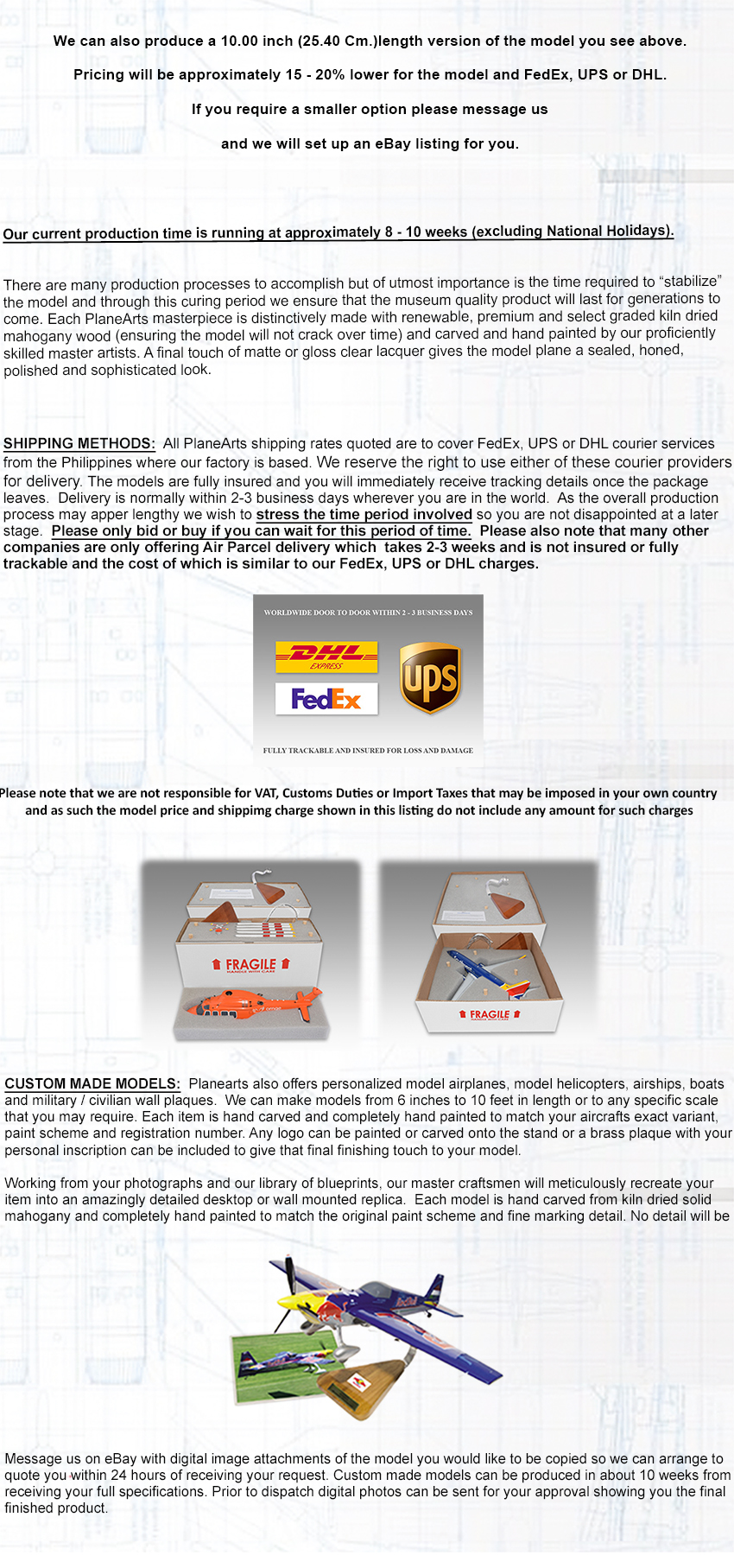



The Saab 2000 Crossair: An In-depth Look at the Pioneering Regional Airliner
The Saab 2000, one of the fastest turboprop airplanes ever built, is a fascinating study in aviation design and regional airline history. Developed by Saab Aircraft AB, a division of the Swedish aerospace company SAAB AB, the Saab 2000 was intended to meet the needs of European regional carriers for a high-speed turboprop. One of the primary operators of this aircraft was Crossair, a regional airline in Switzerland that played a crucial role in popularizing this model. This article delves into the design, performance, and operational history of the Saab 2000 with a special focus on its service with Crossair.
Development and Features:
The Saab 2000 was officially launched in 1988 with the goal of creating a larger and faster successor to the successful Saab 340. The aircraft features a 50-seat arrangement, stretching 7.55 meters longer than its predecessor. It was equipped with powerful Rolls-Royce AE 2100A engines, which allowed it to achieve speeds close to that of jetliners, with a cruising speed of 685 km/h (425 mph).
One of the key aspects of the Saab 2000’s design was its emphasis on passenger comfort. The cabin was designed to be quiet and comfortable, with active noise and vibration control systems significantly reducing in-flight noise levels. This feature made it particularly attractive to business travelers who frequented regional routes.
Crossair’s Role:
Crossair was one of the early adopters of the Saab 2000, seeing it as a perfect fit for its expanding network of European destinations. The airline, based in Basel, Switzerland, incorporated the aircraft into its fleet in the mid-1990s. Crossair’s utilization of the Saab 2000 exemplifies the aircraft’s capabilities in serving short to medium-haul routes effectively, providing a jet-like speed with turboprop efficiency.
Under Crossair, the Saab 2000 served many destinations across Europe, showcasing its operational efficiency and reliability. Its performance in challenging weather conditions and shorter runways was particularly noted, which is a testament to its robust engineering.
Operational History:
The Saab 2000 entered service in 1994 and saw widespread usage across various airlines besides Crossair, including Scandinavian Airlines (SAS), Eastern Airways, and Carpatair. However, the widespread adoption of regional jets and shifts in market demand led to a gradual phase-out of turboprops in many fleets.
Despite this, the Saab 2000 remains in use in specialized roles such as corporate transport, governmental flights, and by smaller airlines that value its unique combination of speed and short takeoff and landing capabilities. Its durability and adaptability have ensured that it remains relevant in various capacities beyond traditional commercial passenger service.
Legacy:
Today, the legacy of the Saab 2000 in the fleets of airlines like Crossair is marked by its contribution to regional air travel. It bridged the gap between jet speed and turboprop economy, providing essential service on routes that were not viable for larger jets. For aviation enthusiasts, the Saab 2000 represents a notable chapter in the history of regional aircraft development, marked by innovation and adaptation to market needs.
In retrospect, the Saab 2000 Crossair exemplifies how regional airlines adapted advanced aviation technologies to serve distinct markets, fostering regional connectivity and promoting economic development. Its story is a reminder of the dynamic nature of the aviation industry and the continual evolution of aircraft to meet the diverse needs of global travel.
